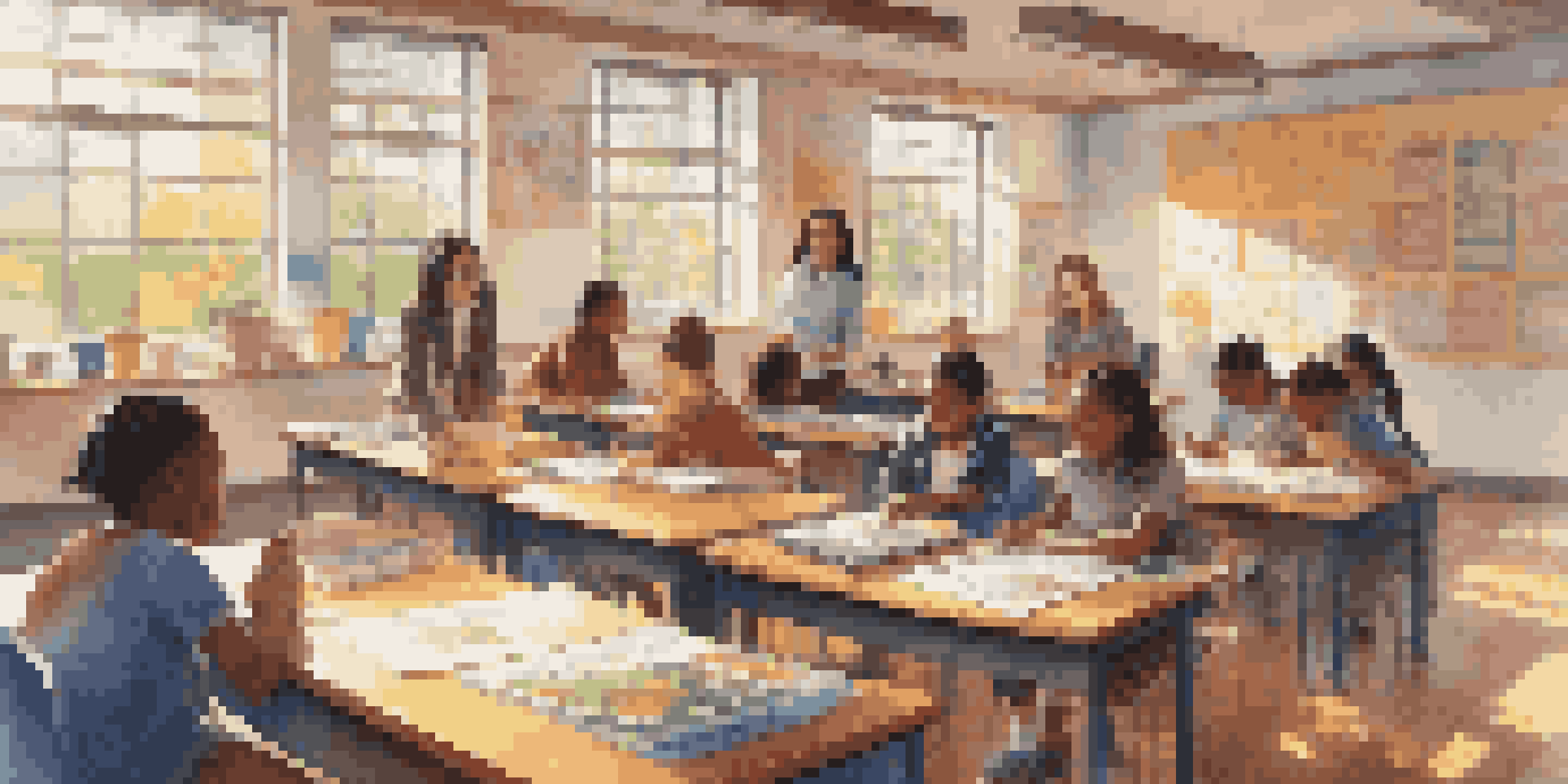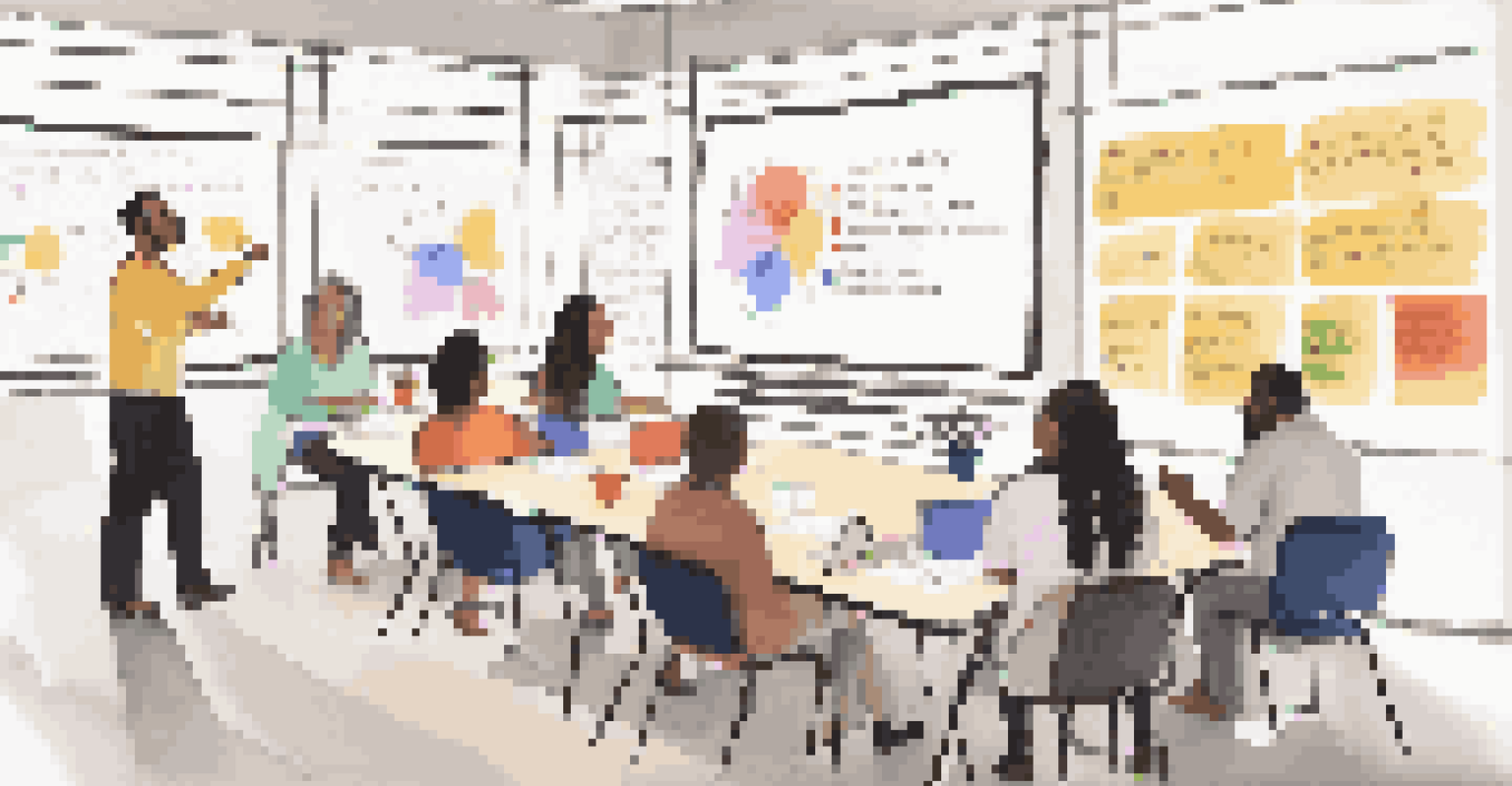Global Education: Addressing the Needs of Diverse Learners

Understanding Diversity in Global Education Systems
Education systems around the world are incredibly diverse, reflecting different cultures, languages, and socioeconomic contexts. This diversity means that learners come with varied backgrounds, experiences, and needs. Recognizing these differences is crucial for any effective educational approach, as what works for one group may not resonate with another.
Diversity is not a reason for division; it is a reason for unity.
For instance, in countries with multiple official languages, bilingual education models can be essential for effective learning. Similarly, students from low-income backgrounds may face additional barriers that require tailored interventions. By understanding the unique characteristics of diverse learners, educators can better address their specific needs.
Ultimately, embracing this diversity can enrich the educational experience for everyone involved. When students encounter different perspectives and learning styles, it fosters a more inclusive environment and promotes global citizenship.
The Role of Inclusive Education Practices
Inclusive education practices aim to provide all students, regardless of their abilities or backgrounds, with equitable access to learning opportunities. This approach ensures that every learner feels valued and supported, which is essential for their academic success. For example, differentiated instruction allows teachers to tailor their teaching methods to accommodate different learning styles.

Moreover, creating a supportive classroom environment can enhance student engagement. When learners see their identities reflected in the curriculum, they are more likely to participate actively. Teachers can achieve this by incorporating culturally relevant materials and resources that resonate with all students.
Embrace Diversity in Education
Recognizing and addressing the diverse backgrounds, experiences, and needs of learners enhances educational approaches.
Inclusion not only benefits those with disabilities or learning challenges but also enhances the educational experience for the entire class. By fostering a culture of respect and understanding, schools can cultivate a sense of community that values diversity.
Technology as a Tool for Diverse Learning Needs
In today’s digital age, technology plays a pivotal role in addressing the needs of diverse learners. Online resources, educational apps, and adaptive learning platforms can provide personalized learning experiences that cater to individual students. For instance, a student struggling with reading can use text-to-speech software to help them better understand the material.
Education is the most powerful weapon which you can use to change the world.
Additionally, technology can bridge gaps in accessibility, allowing learners in remote areas to access quality education. Virtual classrooms and online courses can connect students with expert educators, regardless of their geographical location. This flexibility makes education more inclusive and reachable for all.
However, it's important to ensure that technology is used thoughtfully and equitably. Not all students have the same access to devices or the internet, so educators must be mindful of these disparities when integrating technology into their teaching.
Cultural Competence in Teaching Strategies
Cultural competence is vital for educators working with diverse learners. It involves understanding and appreciating different cultural backgrounds and integrating this awareness into teaching practices. This can mean adapting lessons to include culturally relevant examples or demonstrating sensitivity to the unique challenges faced by various student groups.
For example, teachers can create projects that celebrate students' cultural heritages, allowing them to share their backgrounds with peers. This not only fosters a sense of belonging but also educates all students about different cultures. Such practices can significantly enhance student engagement and motivation.
Technology Bridges Learning Gaps
Utilizing technology can provide personalized learning experiences and improve accessibility for diverse learners.
By fostering cultural competence, educators not only enrich their teaching but also prepare students to thrive in a diverse world. It encourages empathy and understanding, which are essential skills in today’s interconnected society.
The Importance of Collaboration in Global Education
Collaboration among educators, parents, and communities is key to effectively addressing the needs of diverse learners. When all stakeholders work together, they can create a more holistic and supportive educational environment. For instance, regular communication between teachers and parents can help identify and address specific learning challenges.
Furthermore, involving community organizations can provide additional resources and support. Local groups often have valuable insights and services that can enhance students' learning experiences. By leveraging these partnerships, schools can offer a more comprehensive approach to education.
Ultimately, collaboration fosters a sense of shared responsibility for student success. When everyone works toward a common goal, it creates a stronger support system for learners, helping them to thrive academically and socially.
Assessment Strategies for Diverse Learners
Traditional assessment methods may not accurately reflect the abilities of all students, especially those from diverse backgrounds. Therefore, educators are increasingly adopting varied assessment strategies to capture a more comprehensive picture of student learning. For example, performance-based assessments allow students to demonstrate their knowledge through projects or presentations.
Additionally, formative assessments, such as class discussions and peer feedback, can provide valuable insights into student understanding. These ongoing assessments help educators adjust their teaching methods to better suit individual learning needs. By focusing on a range of assessment types, teachers can ensure that every student has the opportunity to showcase their strengths.
Collaboration is Key to Success
Effective collaboration among educators, parents, and communities creates a supportive environment for diverse learners.
Moreover, culturally responsive assessments can help minimize bias and provide a fair evaluation of student performance. This approach recognizes that students come from different backgrounds and may express their knowledge in various ways.
Future Directions in Global Education for Diverse Learners
As we look to the future, the need for an education system that accommodates diverse learners is more pressing than ever. With globalization and increasing migration, classrooms around the world are becoming more diverse. This shift presents both challenges and opportunities for educators to innovate and adapt their practices.
Future educational initiatives may focus on creating more inclusive curricula that reflect the experiences and needs of all students. This could involve developing materials that are more culturally relevant and representative of different perspectives. Additionally, there may be a greater emphasis on social-emotional learning, which supports students' mental well-being and fosters resilience.

Ultimately, embracing diversity in education is not just a trend but a necessity. By prioritizing inclusive practices, we can create a more equitable and effective education system that prepares all learners to succeed in an increasingly interconnected world.